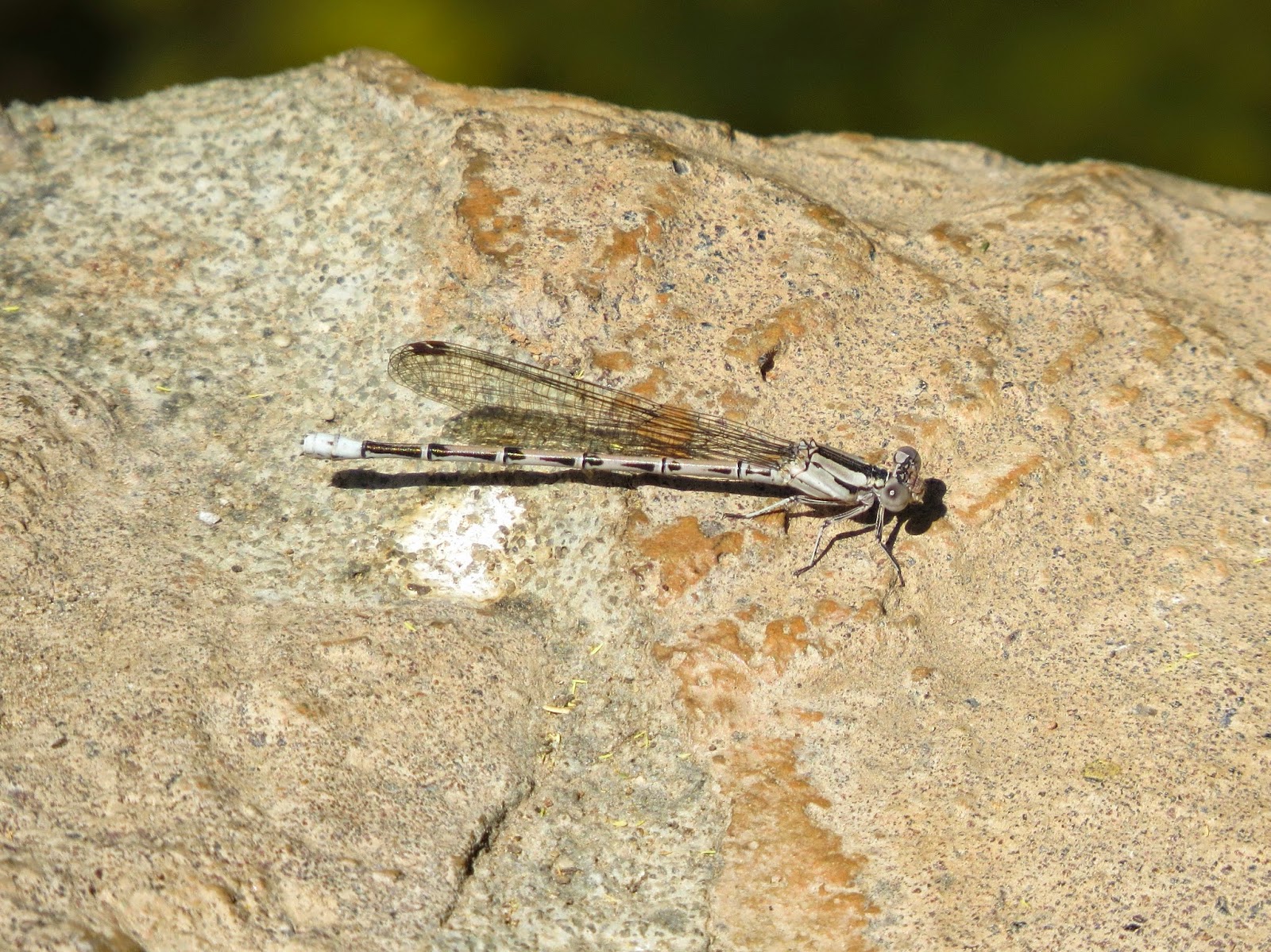One was a beautiful male Broad-billed Hummingbird that perched for us in the sunlight. This was in the Cactus Garden area, near the boojum tree. Such a nice contrast between his flame red bill and the iridescent blues and greens in his body.
 |
| A Broad-billed Hummingbird at the Boyce Thompson Arboretum. |
A little later, on the shady path near the Herb Garden, we saw two baby Anna's Hummingbirds almost spilling out of their tiny nest. Good thing it's so elastic. Here are the babies:
 |
| Baby Anna's Hummingbirds overflowing their nest. |
As we watched, they decided to take a little nap:
 |
| Nap time for the babies. |
Hummingbirds are a common part of a visit to the arboretum, even babies in the nest. What was a bit more exciting, however, was the next unexpected pleasure – a Western Diamonback Rattlesnake. We were heading back toward the picnic area for lunch when we spotted a good-sized rattler under a bush. I would say it was around 5 feet long. Here are a couple photos of it:
 |
| Western Diamondback Rattlesnake. Clearly a member of the pit viper family. |
He was getting a good look at us. As he moved on I was able to get a couple shots of his rattles, and also the black and white bands of roughly equal width:
It was interesting having lunch, knowing this guy was just a few feet away. Oh well, he was staying well under the bush, so we weren't concerned.
After lunch we took a walk through the Demonstration Garden. We checked out the hummingbird nest on top a pine cone, but discovered that the babies had left. Just then we stopped dead in our tracks as we saw the guy below lumbering out of the meadow onto the walking path:
 |
| A Gila Monster strolling across the walking path. |
What a treat to see the Gila Monster. We've seen them before at the arboretum, but always in the desert area, near the Cactus Garden. This was the first we'd even heard of one being in the Demonstration Garden.
He sauntered across the path, then disappeared into the brush on the other side. A nice treat to top off our day of unexpected pleasures.





























